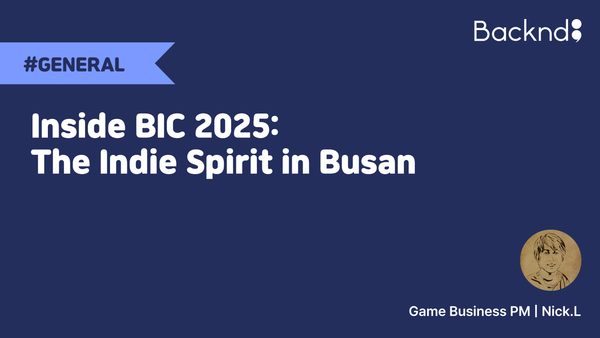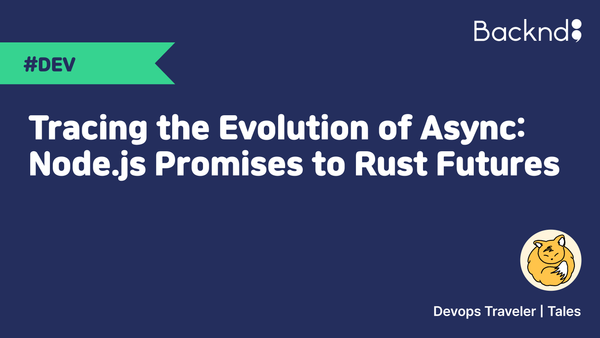[External Essay] From Cologne to Busan – Gamescom 2024 to GSTAR 2024
![[External Essay] From Cologne to Busan – Gamescom 2024 to GSTAR 2024](/content/images/size/w1200/2024/12/--2.png)
Written by Anton Sagel, 5 December 2024

Visitor from afar
I visited GSTAR 2024 for the second time this year but this time I also decided to attend GCON. There, and at the events surrounding it, I made many memories and friends. Moreover, many differences between the Western and Korean games industries left their impression on me. As such, I would like to share these impressions to those other foreigners who would like to know more about the Korean games industry. But I would also like to invite any Korean both curious about game development in the West, or just wanting to read about an outsider’s view on game development in Korea
As someone who not only studied games at a very international campus but also studied a year abroad in Sweden, I thought I was used to cultural differences. In fact, I have always thought that the gaming industry has a surprising homogeneity, considering its relatively young age. As I am now finishing my master's degree, I am looking to work in Korea. As such, I was very happy to meet many Koreans developers at Gamescom. But when I excitedly went to GCON, many things where different from how I expected them. In this article, I would like to share the experiences that surprised me and awakened further curiosity in me.
Games
It is very overwhelming to enter a large hall filmed to the brim with games – and hardly knowing a single one of them. I saw some that I had already tried last year or at Gamescom, such as Inzoi. I freely wandered around, looking at various titles, from university projects over indie games to AAA titles. This shows that a visit to GSTAR is worthwhile for non-Koreans. However, it is also a testament to the low visibility of some Koreans games outside of Korea.
People
When talking about a country’s games industry, people often talk about market segmentation, revenue and similar. The yearly white papers on these topics published by the Korean government are a great source. But just as an industry consists of companies, it also consists of people.
As a person myself (you never know with the advent of generative AI), I was very happy to meet many people at GSTAR. And here I noticed a big difference to the games industry in Europe. The game developers that I met had essentially exclusively a background in computer science. While it is not an uncommon background to have in the west, I have the impression that multidisciplinarity is much more prevalent there. There is also a growing number of graduates from degrees specialised on game development – I myself am one of them. The nascent academic field of games draws from several academic disciplines but is heavily influenced by the humanities. For instance, movies and art history were as much part of my curriculum like running a games business. Consequently, discussions of message and artistic merit are not uncommon with my peers. Yet in Korea, I felt more like interacting with software developers; no surprise, given the backgrounds of many developers. For example, when I asked fellow game designers (more on that below) about their role in their company, the answer was “player retention”. Ultimately, they did the same that a game designer does in the west: systems design, balancing, etc. Yet it is telling that they described their contribution not from a creative but from a business perspective. A contributing factor is perhaps that, until recently, Korean highschoolers had to choose between specialising in natural sciences (이과) and humanities (문과).
Therefore, the difference between game developers from Korea and those in the west lies not only in the cultural differences of their home countries; but it also lies in the differences between the academic branches that shaped their education.
Director (기획자) vs Designer (디자이너)
When I introduced myself to others as a Game Designer, I was often asked what kind of art I make. However, a 디자이너 (literal translation of Designer) is what is called a Game Artist in the Western games industry. I, however, design things such as features, systems and narratives. Luckily, I was trained in this misunderstanding – because it is actually the same in German. Accordingly, I would advise others like me to introduce themselves as 기획자 – director – from now on. And just in case, giving a few examples of one’s tasks is sure to remove any misunderstandings.
Specialisations and Styles
Now that the difference between Game Artists and Designers is clear, the other specialisations should not remain in the shadow. There, we have the Programmers but also Sound Designers and Writers. Of course, there. To the curious reader, I highly recommend Liz England’s famous “The Door Problem”. The trained eye will likely recognise somebody’s rough specialisation based on their fashion style. But when I visited GCON, the clothing style was much more uniform. Business-like and again what I would expect from software developers. Perhaps this is again due to shared academic backgrounds. Moreover, I met a Game Designer who also did coding at their company – so perhaps the specialisations are less specialised.
Accordingly, I think it important for Westerners wanting to work in Korea to enquire about their future roles and task, in order to avoid a mismatch in expectations.
What even are Genres?
Even in the West, game genres are hardly used consistently - I once even saw Counter Strike being classified as an RPG. There have been standardisation efforts or attempts to establish completely different classifications. So far, to little avail, it seems.
But when I attended GCON and the surrounding networking events my confusion was even greater. I heard most outlandish phrases, such as “2D games usually have an anime style”. While I know what an anime is, what exactly is a 2D game? And what does this have to do with anime? Is this a technical definition? Is super Mario Bros (1985) a 2D game? The Binding of Isaac (2011)? Or games that look three-dimensional but are functionally two-dimensional, such as Doom (1993)? Surely, these games are increasingly dissimilar with anime. In fact, I have the impression that the term “2D game” mostly refers to Visual Novels. Analogous to the “2D game” genre there is also a “3D game” genre. Aside from edge-cases, this seems intuitive to me. But then what are non-3D games that are not Visual Novels? It appears that the genres are not as dichotomous as they sound.
Another genre I caught wind of are “control games”, with League of Legends (2009) as an example. I know this game as a MOBA – Multiplayer Online Battle Arena. It is not that a distrust Koreans’ judgment on League of Legends, given how popular the game is there.
Again, I think it is best to simply give a few example games, whenever talking about genres. This way, one can be sure that everyone is on the same page.
Lamenting Strategy Games
As I have already referenced a stereotype: what happened to Starcraft’s legacy in Korea? How could a game, that was so popular that it managed to be a rhetorical point in parliament, not leave behind a thriving strategy games sector? Interestingly, developers who I asked that confided in me that they love playing strategy games. In fact, I have seen many mods for Victoria 3 (2022) made by Koreans. With neither enthusiasm nor expertise missing, a variation of the Fermi Paradox arises: where are all the Korean strategy games?
Going Forward
My eagerness to learn more about the Korean games industry only grew – and so I am more than happy to visit GSTAR again. Events like Gamescom and GSTAR are great opportunities to foster international connectivity.
I wish for nothing more than a Korean-English gaming dictionary. But for this, more standardisation is needed on a global scale. As such, I started reading game design books, written by Koreans, in Korean. Not only to better understand the Korean perspective on games but also to build my vocabulary.
I hope to help foster connections between the gaming industry in Korea and that in nations all around the world. Great achievements have already been made: Lies of P (2023) winning three Gamescom awards in 2022 sparked great interest in Korean companies, with many of them exhibiting at Gamescom since. I will be glad if this article helps Korean companies to visit international gaming events. Vice versa, I hope that I have raised curiosity in those outside Korea to pay events like GSTAR a visit.
As I continue my explorations, I appreciate any corrections and insights from the international game development community.
If you like this posting, please subscribe us!

© 2024 AFI, INC. All Rights Reserved. All Pictures cannot be copied without permission.

![[External Essay] Gamescom 2025 Interactions](/content/images/size/w600/2025/09/------1.png)


